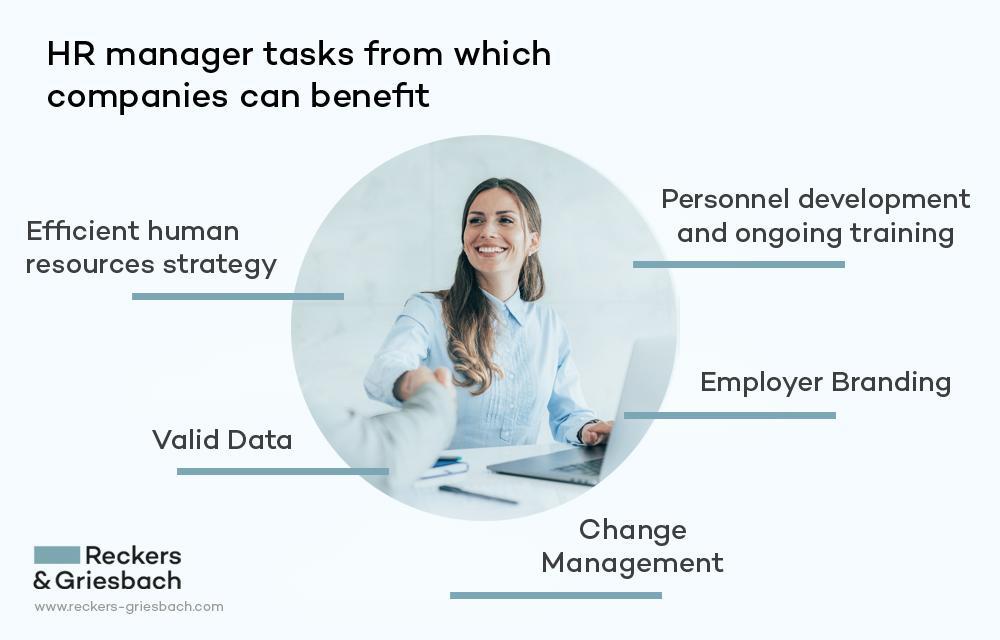Human Resources – Tasks between tradition and reorientation
Reading time: 17 Minuten
A company´s most valuable resource is undoubtedly its employees. Human Resources (HR) is therefore of paramount relevancy to a well-thought-out, well-managed corporate strategy with all its associated processes and goals. In reality, unfortunately, the situation is often quite different, especially in medium-sized companies. A [...]
A company´s most valuable resource is undoubtedly its employees. Human Resources (HR) is therefore of paramount relevancy to a well-thought-out, well-managed corporate strategy with all its associated processes and goals.
In reality, unfortunately, the situation is often quite different, especially in medium-sized companies. A number of steps are still necessary to ensure that the transformation to “HR business partner” can succeed. The key is a mindset that aims to dust off an outdated image and finally treat HR as a partner on an equal footing.

Claim and reality of the HR Business Partner
The times when HR managers primarily took care of administrative tasks are almost a relic of the past. Today, the focus is increasingly on well thought-out personnel planning and development.
However, although many companies are keen to emphasize a partnership between corporate management and HR, the reality in medium-sized companies paints a different picture – the prospect of finding a business partner with an active role in processes and decisions relevant to corporate strategy is often nowhere to be found.
HR is still by no means part of direct management or the C-level and is instead categorized as part of extended management. When HR is involved in internal corporate planning, it is often based on the fundamental strategic decisions of the C-level. As a result, HR trails behind in terms of its capabilities and can often only react instead of act. Consequently, strategic, long-term planning and development opportunities in HR are more the exception than the rule.
In their job specification profiles, job advertisements often suggest that HR managers are involved in all decision-making processes, but at the latest when it comes to the hierarchical classification, it becomes clear that this is not how things are practiced in reality.
What´s more, neither sufficient personnel nor financial resources are being made available to cope with the extensive range of tasks. Overcoming the failings of the past and simultaneously promoting, HR development, employer branding and employee satisfaction and retention, is a mammoth task that requires sufficient resources and the appropriate commitment to bring about a truly transformational change.
Today, the focus is increasingly on well thought-out personnel planning and development.
Human Resources: Tasks for innovative, future-oriented management
As a direct result, employees are committed to their company out of a deep sense of loyalty, are proud of what they have achieved and project an image of the company that reflects its status as an attractive and interesting employer. This positive external image is an integral part of successful employer branding, which helps the company to stand out from its competitors in the market.
In order to consolidate a new mindset, it is also important to create a position that is equivalent to other management areas (CHRO) and to firmly anchor HR in the corporate structure in the very top management hierarchy. This is the only way to create the conditions for collaboration at eye level and the only way to integrate human resources tasks profitably and bring the department on board effectively for all important decisions.
Advantages of a systematic realignment of Human Resources
Involving HR at an early stage enables companies to plan for the long term. Human Resources can be adapted explicitly to strategic goals and developed accordingly. The professional potential of the company´s own employees is utilized, the company benefits from greater brand recognition and can count on many years of professional know-how and the loyalty of its employees.
When company executives implement a new mindset, HR Business Partners are able to focus on important core tasks that are part of the HR manager´s job profile and from which the company benefits.
Advantages of a systematic realignment of Human Resources

Involving HR at an early stage enables forward-looking strategic personnel planning. Impending bottlenecks can be responded to promptly via recruiting. This is a process that is already being made more difficult by the current shortage of skilled workers and will remain one of the greatest challenges for companies in the long term.

It is essential for companies to use their own personnel resources and their professional skills and to develop them further through appropriate qualification initiatives. Only when employees are given support and perspectives do they feel valued and identify with the company. Satisfied and committed employees increase productivity and ultimately also the added value.

Anchoring Human Resources with its field of responsibility in Management leads to reliable data, because HR Business Partners know the employee KPIs, know which professional competencies are in place, which skills can be achieved with further training and where there are personnel gaps in the company´s goals that need to be closed. Strategic planning in corporate management is thus possible in a considerably more concrete way.

Employer branding or HR marketing has been playing an increasingly important role in HR management for years. However, it is not just about the external image and thus the attractiveness of the company, but HR, in cooperation with the management, is also accountable for fulfilling the promises internally.

As part of their duties, HR Business Partners drive change processes within the company. For example, digitization requires a whole network of new, dynamic structures. In turn, operational HR must be automated by intelligent software solutions. The focus on change processes requires a significantly higher investment in the Human Resources department.

Shaping change processes sustainably and strategically takes time. On both sides. After all, not only companies, but also HR managers must learn to say goodbye to familiar structures and forge new ground. Only then it is possible to survive successfully on the market in the long term.
In all these steps, people will continue to be the pivotal factor in the future. That is why it is imperative to involve Human Resources from the outset in new business models, acquisitions, restructuring and new Human Resources tasks. As an equal partner at eye level.
We fill leadership positions. Permanent and Interim.

